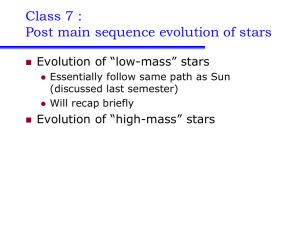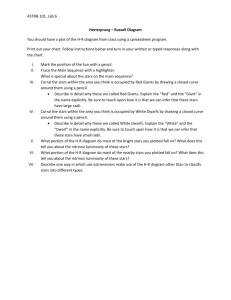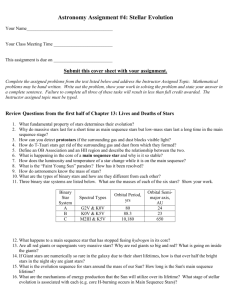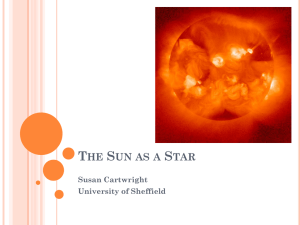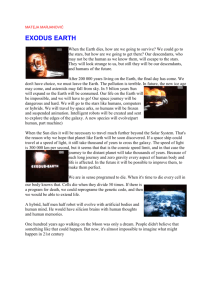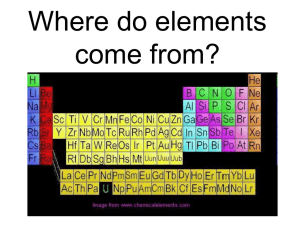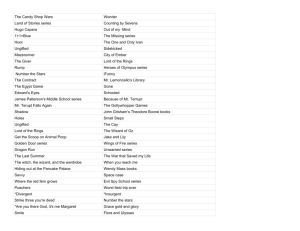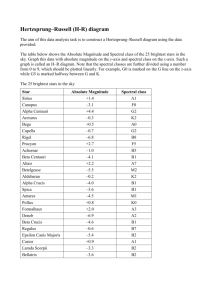HW #9: Stellar Evolution
advertisement
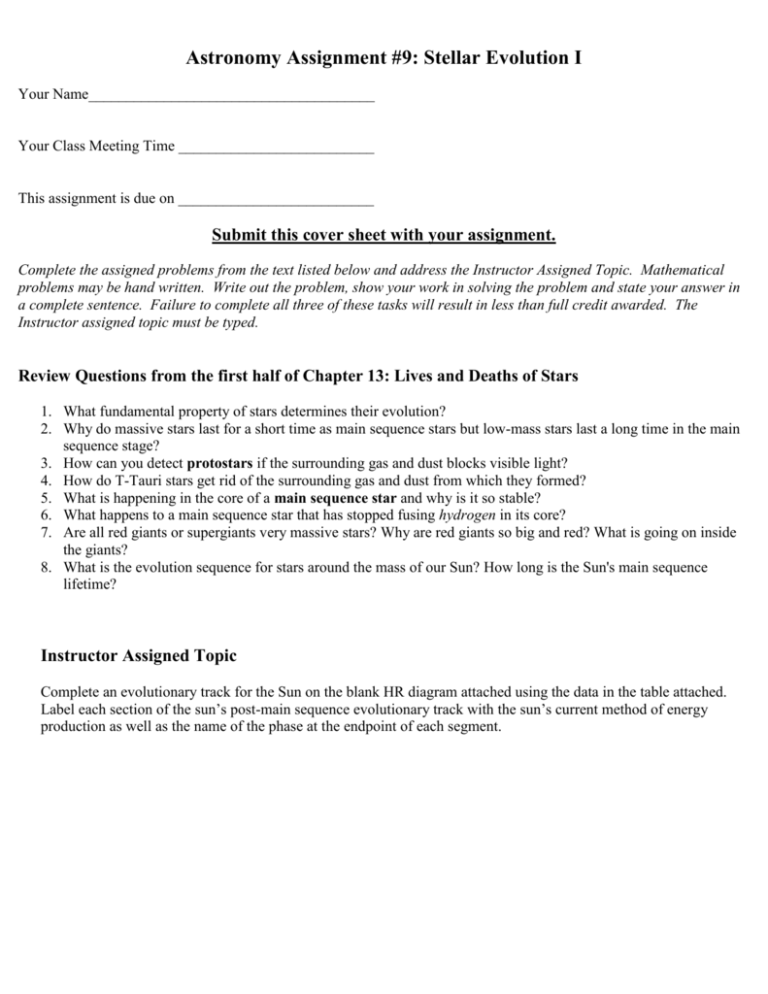
Astronomy Assignment #9: Stellar Evolution I Your Name______________________________________ Your Class Meeting Time __________________________ This assignment is due on __________________________ Submit this cover sheet with your assignment. Complete the assigned problems from the text listed below and address the Instructor Assigned Topic. Mathematical problems may be hand written. Write out the problem, show your work in solving the problem and state your answer in a complete sentence. Failure to complete all three of these tasks will result in less than full credit awarded. The Instructor assigned topic must be typed. Review Questions from the first half of Chapter 13: Lives and Deaths of Stars 1. What fundamental property of stars determines their evolution? 2. Why do massive stars last for a short time as main sequence stars but low-mass stars last a long time in the main sequence stage? 3. How can you detect protostars if the surrounding gas and dust blocks visible light? 4. How do T-Tauri stars get rid of the surrounding gas and dust from which they formed? 5. What is happening in the core of a main sequence star and why is it so stable? 6. What happens to a main sequence star that has stopped fusing hydrogen in its core? 7. Are all red giants or supergiants very massive stars? Why are red giants so big and red? What is going on inside the giants? 8. What is the evolution sequence for stars around the mass of our Sun? How long is the Sun's main sequence lifetime? Instructor Assigned Topic Complete an evolutionary track for the Sun on the blank HR diagram attached using the data in the table attached. Label each section of the sun’s post-main sequence evolutionary track with the sun’s current method of energy production as well as the name of the phase at the endpoint of each segment. Post-Main Sequence Evolution of the Sun Stage Energy Production Method Main Sequence Core Hydrogen Burning Red Giant Shell Hydrogen Burning Horizontal Branch Core Helium Burning Red Super Giant Shell Helium Burning Planetary Nebula None 3,000 K White Dwarf None 50,000 K Spectral Type M G2 +4.8 (1 L) M3 -3.6 (2,350 L) K1 0 (100 L) M3 -3.9 (3,000 L) Surface Temperature Radius in Solar Radii Core Temperature Lifetime 15 Million K 10 Billion Years 166 50 Million K 100 Million Years 5,000 K 10 200 Million K 50 Million Years 3,000 K 180 250 Million K 10,000 years 300 Million K Short 100 Million K Very Long 5,800 K 3,500 K 1 0.01 2 HR Diagram 30,000 K -10 9,500 K 7,200 K 6,000 K 5,250 K 3,800 K 1,000 R 60 M -5 17.5 M 100 R Absolute Magnitude 5.9 M 2.9 M 0 1.8 M 10 R 1.2 M 0.1 R 1.0 M 5 Sun .67 M 1 R 0.01 R 10 .21 M 0.001 R 15 20 O B A F G K M Spectral Type 3
